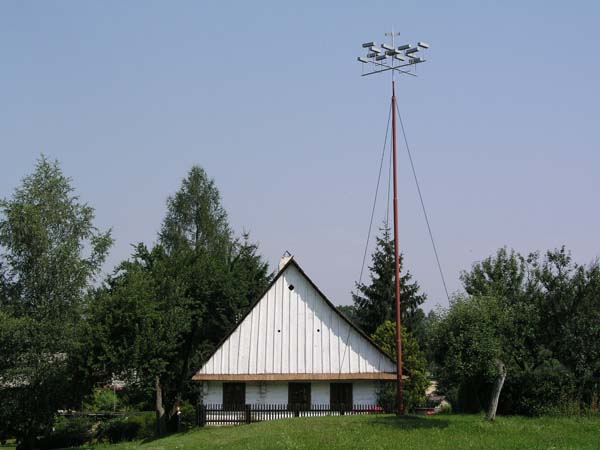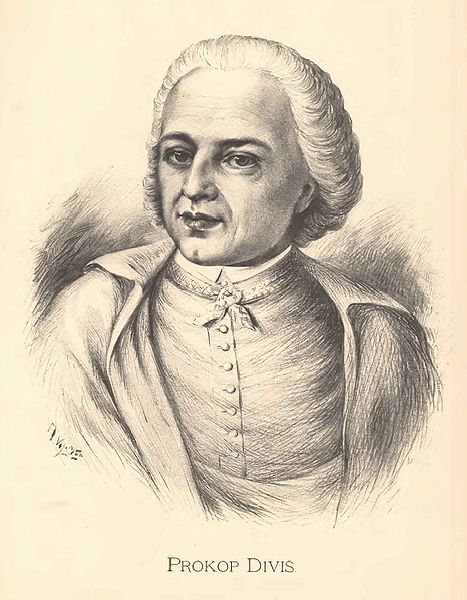Dom Prokop Diviš, a Czech polymath born on this day in 1698, enjoyed shocking people in both the literal and figurative sense of the word.
Often cast as the European counterpart to Benjamin Franklin because the two men simultaneously and independently invented the lightning rod, Diviš became fascinated with electricity while working as a theologian in a Moravian parish of Přímětice. Given his interest in shock-treating plants and erecting DIY “weather machines” on his property, Diviš earned a reputation as a kook by his contemporaries.
Videos by VICE
But he is now regarded as the earliest visionary of electronic music, an artform that is normally not associated with the 18th century.

Diviš’ house (now a museum) with a model of his lightning rod outside. Image: Employees of MMŽbk
As a monastic canon regular, musical theory and design was an important part of Diviš’ professional life. By 1730, his dual interests in music and electricity had merged into a single obsession with creating an electrically enhanced musical instrument. Sometime between 1730 and 1762—historical accounts vary widely—Diviš unveiled his masterpiece, which he called the “Denis d’or,” or Golden Dionysus.
The Denis d’or was a keyboard-based instrument outfitted with 790 iron strings that were positioned to be struck like a clavichord rather than plucked like a guitar. According to the Cambridge Introduction to Electronic Music, the instrument’s “ingenious and complex system of stops […] were said (in various combinations) to imitate an astonishing array of instruments including, it was claimed, aerophones,” or wind instruments. Some sources suggest that the Denis d’or was also capable of mimicking the sounds of plucked stringed instruments including harps and lutes.
To push the instrument’s acoustic range further, Diviš rigged its conductive iron strings to hold a short-term electric charge. It’s not known exactly how he galvanized the strings, but he may have used something like a Leyden jar, the first capacitor developed in history, which Diviš frequently employed in experiments.
Read More: Tomorrow’s Musical Instruments Look Like Lightsabers and Metal Detectors
Historians are conflicted over the extent to which electrifying the strings modified the sound quality, and many sources suggest Diviš mainly hacked the Denis d’or in order to play practical jokes on players.
“The Denis d’or was the first musical instrument to involve electricity, though this was probably not an essential part of its action,” said Belgian musicologist François-Joseph Fétis in his 1874 book Biographie universelle des musiciens. “Diviš claimed that the performer could be shocked ‘as often as the inventor wished.’”
In other words, Diviš lived up to his reputation as a fantastic weirdo. Much like its inventor, the Denis d’or was a true original. Only one prototype of the instrument was ever built. After Diviš’ death in 1765, the instrument was rumored to have been sold off to Vienna, and has since been lost to history. I couldn’t even find any designs or sketches of the instrument.
However, its legacy as the first musical device to integrate electricity into its hardware lives on in every theremin performance, electric guitar solo, and EDM festival. Here’s hoping that one day, the Denis d’or resurfaces in a thrift shop or church basement somewhere, ready to shock and roll once more.




